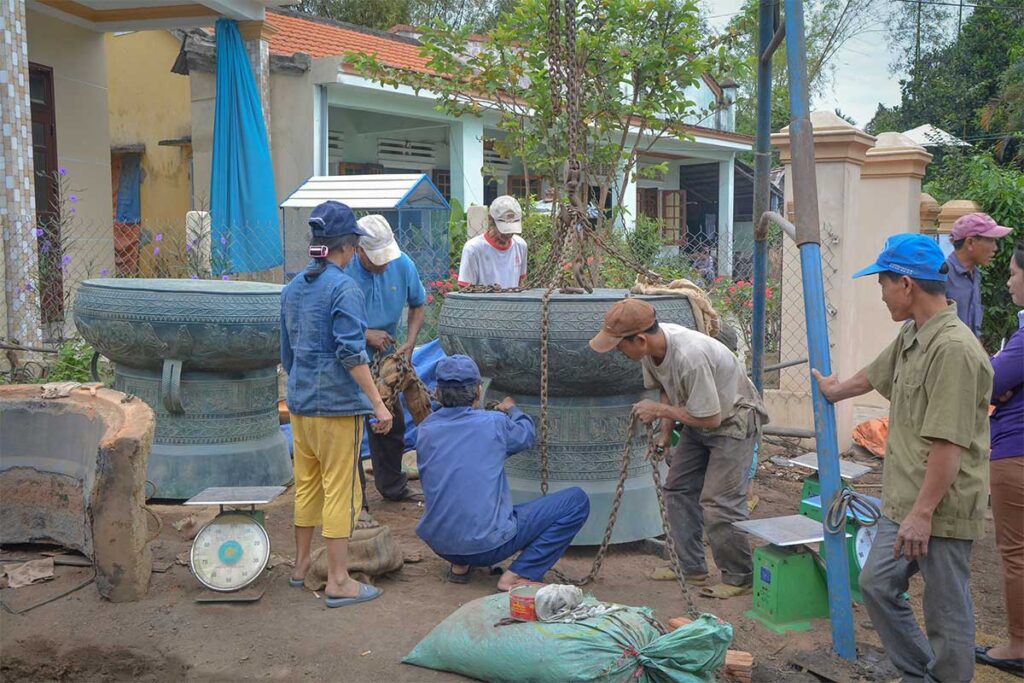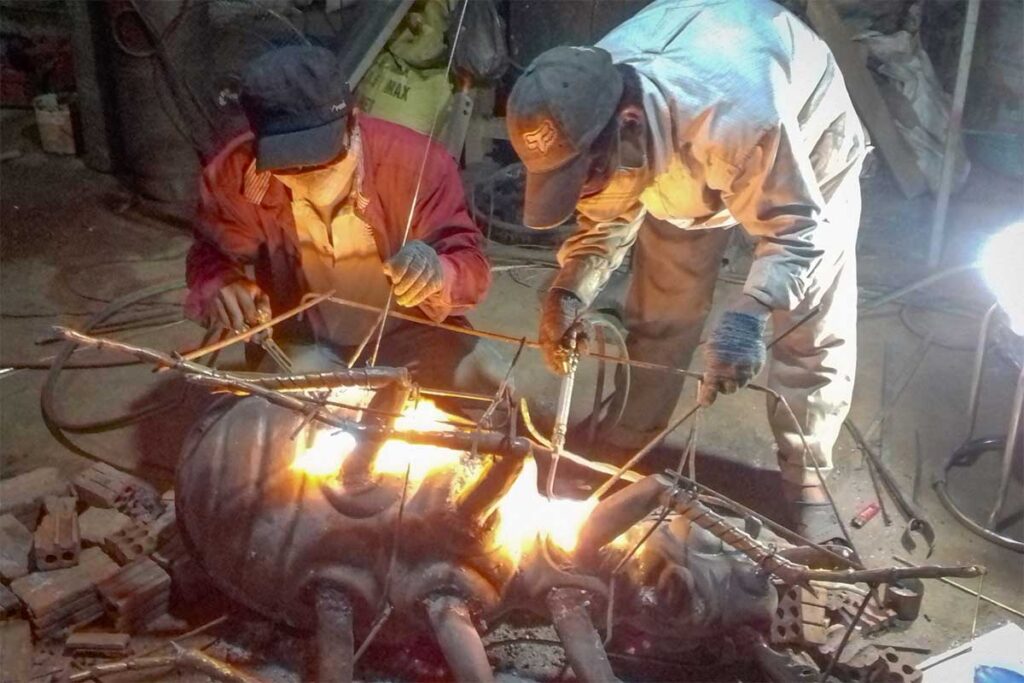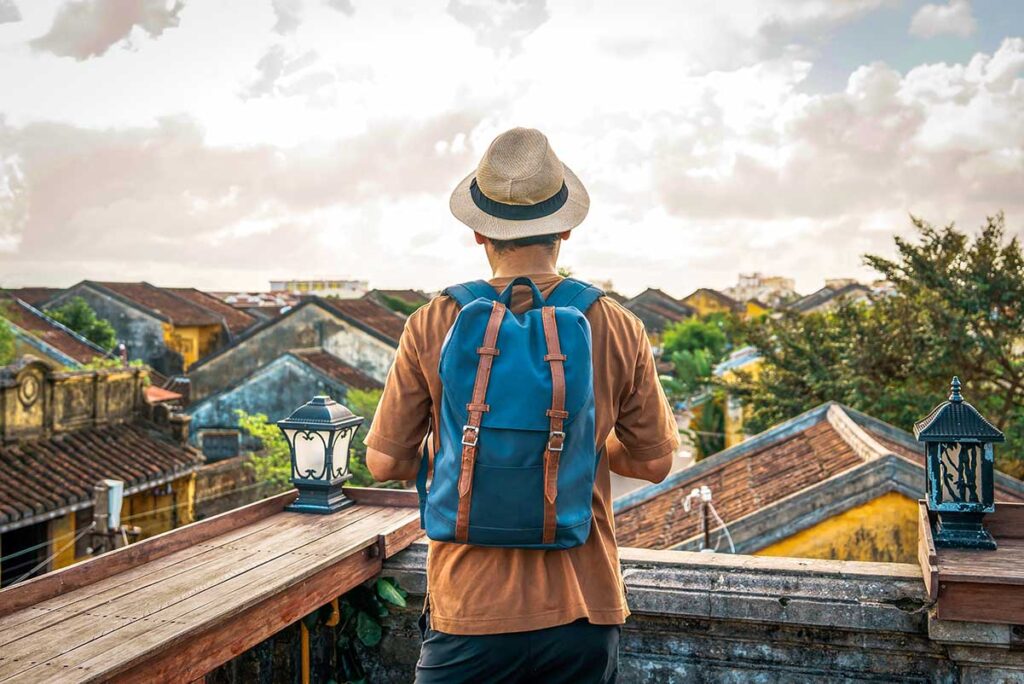What is Phuoc Kieu Bronze Casting Village?
Phuoc Kieu Bronze Casting Village is a historic craft village in Quang Nam Province, Vietnam, renowned for producing handmade bronze gongs, bells, incense burners, and ceremonial objects. It has built a reputation over centuries for the exceptional quality and sound-tuning of its gongs—many of which are still used today by ethnic communities in Vietnam’s Central Highlands and even parts of Laos. While the village is no longer as large or bustling as during its peak, it remains an active community of skilled artisans preserving this traditional craft.


History of Phuoc Kieu Village
Phuoc Kieu Bronze Casting Village traces its origins back over 400 years to Duong Tien Hien, an artisan from Thanh Hoa who migrated south and established the craft to serve the Nguyen Lords. The village grew in importance during the Tay Son era, becoming a production site for weapons and ceremonial items, and was officially merged into one commune in 1832 by King Minh Mang. Throughout history, it supplied bronze artifacts for royal courts, including seals, musical instruments, and weaponry.
The village experienced a golden age between the 1950s and 1970s, producing hundreds of tons of bronze goods annually. However, with the rise of cheaper imports in the 1980s, production declined sharply. Today, thanks to renewed interest, artisan dedication, and local government support, Phuoc Kieu is seeing a revival. Among its most notable achievements are two accurate replicas of Nguyen Dynasty cannons and a monumental bronze bell cast for the martyrs’ cemetery in Dien Ban—both symbols of the village’s enduring skill and cultural legacy.
What to see and do in Phuoc Kieu Village
1. Watch the Bronze Casting Process

Phuoc Kieu is one of the few places where you can still see traditional bronze casting done by hand. Many households use age-old methods involving clay molds, metal mixing, and hand-tuning to create bells, gongs, urns, and ceremonial items.
2. Explore Local Workshops and Shops

You won’t find a central tourist area here—just small, family-run workshops scattered around the village. Walk through and browse handmade items like incense burners, gongs, statues, and feng shui pieces. Many visitors pick up a unique souvenir directly from the source.
3. Meet local artisans

Several families have been casting bronze for five or six generations. If you’re interested in Vietnamese musical culture or traditional craftsmanship, take the time to chat with an artisan about their work. Some may even demonstrate how they tune gongs by ear.
4. Photography and culture

Phuoc Kieu has a calm, rural charm that contrasts sharply with the bustle of Hoi An’s Ancient Town. It’s a great spot for photographers, offering scenes of quiet village life, rustic workshops, and cultural heritage without the crowds.
Visitor information and tips
- Opening Hours: There are no official hours, but visiting between 8:00 and 17:00 is best—this is when most workshops are active.
- Entrance Fee: Free—you can explore the village and visit small workshops without a ticket.
- Facilities: Very limited. There are no formal tourist centers, cafés, or restrooms, so bring your own water and snacks.
- What to Bring: A camera, sun protection, small cash for souvenirs, and a respectful attitude—this is a working village, not a tourist attraction.
How to get there
Phuoc Kieu Bronze Casting Village is located in Dien Phuong Commune, about 9–10 km from Hoi An and 25 km south of Da Nang. The easiest way to reach it is by motorbike, private car, or on a guided tour.

You can also rent a car with driver to combine a visit with other nearby craft villages—or even stop here on your way back from My Son Sanctuary, as it’s along the route. It’s technically reachable by bike, but due to distance and traffic, motorized transport is more practical for most travelers.
Is it worth a visit?
Phuoc Kieu Bronze Casting Village is a bit further from Hoi An, and because of that, it’s less curated for tourists. That can be both a downside and a positive. Unlike the more popular villages near Hoi An, Phuoc Kieu doesn’t have many workshops or clearly marked stops—you won’t find cooking classes or bike tours here. But if you’re looking for something more authentic and low-key, this village still has real artisans at work and a deep historical story.
It’s not worth renting a car or taxi just for this village, but it’s a great stop on the way back from My Son or if you’re touring the region by car. You could also combine it with other nearby craft villages for a full half-day trip.
Other craft villages around Hoi An
Quang Nam Province is home to a rich network of traditional villages, each with its own specialty. These nearby spots are ideal to combine with a visit to Phuoc Kieu or to compare different local crafts and experiences:
- Kim Bong Carpentry Village – Known for historic woodworking, intricate architecture carvings, and a legacy of boat building.
- Thanh Ha Pottery Village – Famous for handcrafted clay pottery and the unique Terracotta Park. Hands-on workshops available.
- Tra Que Vegetable Village – Offers organic farming experiences, foot baths, and cooking classes.
- Cam Thanh Coconut Village – A popular eco-tourism spot with basket boat rides and riverside cooking tours.
- Duy Trinh Silk Village – Lesser-known silk weaving village in Duy Xuyen District, preserving traditional textile methods.
For more inspiration, see our full guide to the best villages around Hoi An.



